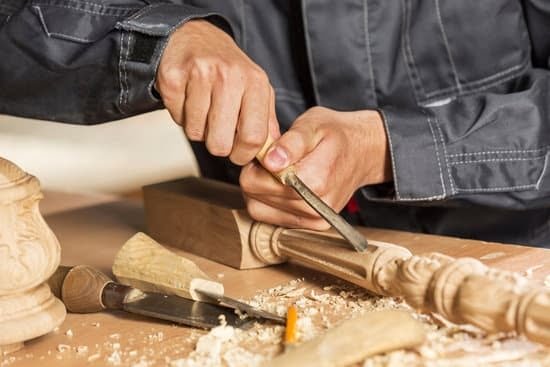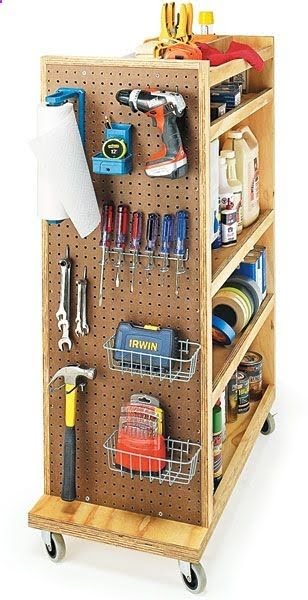Japanese woodworking tools have a long and rich history, and their traditional techniques continue to be favored by woodworkers around the world. In this article, we will explore the art of using Japanese woodworking tools, from their fascinating history to practical tips for choosing, maintaining, and using them effectively.
If you’ve ever wondered how to use Japanese woodworking tools, you’re in the right place. Whether you are a seasoned professional or just starting out with woodworking, understanding these unique tools will open up new possibilities for your craft. From chisels and saws to planes and specialty tools, Japanese woodworking implements offer precision and versatility that are truly unparalleled.
In the following sections, we will delve into the history of Japanese woodworking tools, explore the different types available (such as chisels, saws, and planes), provide guidance on selecting the right ones for your project, and share essential care and maintenance techniques. Additionally, we’ll cover basic and advanced techniques for using these tools effectively while emphasizing safety at all times. Prepare to be inspired by projects made possible through utilizing Japanese woodworking tools in your craftsmanship.
History of Japanese Woodworking Tools
Japanese woodworking tools have a rich history that dates back centuries, with a tradition deeply rooted in craftsmanship and precision. The use of Japanese woodworking tools can be traced back to the Nara period (710-794), where they were initially influenced by Chinese and Korean techniques. However, it was during the Edo period (1603-1868) that Japanese woodworking tools truly began to take shape and evolve into the distinct styles we see today.
During the Edo period, there was a significant shift towards more refined and specialized tools, as well as the development of unique joinery techniques that are still celebrated for their intricacy and strength. This era also saw the rise of various schools of woodworking, each with its own distinctive approach to tool design and usage, leading to a rich diversity of techniques and tools across Japan.
In addition to their functional purpose, Japanese woodworking tools also hold symbolic importance in traditional Japanese culture. Many tools are considered works of art in their own right, with intricate detailing and craftsmanship that reflect the values of harmony, balance, and respect for materials. Today, these historical influences continue to shape the design and use of Japanese woodworking tools, making them not only practical instruments but also cultural artifacts that embody centuries of tradition and craftsmanship.
Types of Japanese Woodworking Tools (Chisels, Saws, Planes, Etc)
In the world of woodworking, Japanese tools have gained a reputation for their precision, quality, and unique design. Japanese woodworking tools encompass a wide variety of hand tools that are essential for any woodworker, from chisels and saws to planes and marking knives. Each tool is expertly crafted to enhance efficiency and produce impeccable results. Here are some of the most common types of Japanese woodworking tools and how to use them effectively.
Chisels
Japanese chisels, or “nomi,” are known for their razor-sharp blades and ergonomic design. These chisels are used for delicate carving work, fine detailing, and mortise and tenon joinery. To use Japanese chisels effectively, it is important to keep the blade sharp at all times using a sharpening stone or water stone. Additionally, proper technique involves using controlled and precise hand movements to achieve clean cuts without damaging the wood fibers.
Saws
Japanese saws are designed with thin, flexible blades that cut on the pull stroke rather than the push stroke like traditional Western saws. The pull-stroke action allows for greater accuracy and control when cutting through wood. When using Japanese saws, it is important to let the sharp teeth do the work while applying gentle pressure. This technique prevents binding and ensures smooth cuts without splintering.
Planes
Japanese planes, or “kanna,” are used for shaping and smoothing wood surfaces. They feature a wooden body and a single blade that can be adjusted to achieve varying thicknesses of shavings. Using Japanese planes requires careful adjustment of the blade depth as well as controlled hand movements to achieve even surfaces. Proper maintenance is also critical in ensuring that the plane’s sole remains perfectly flat for optimal performance.
By learning how to use Japanese woodworking tools properly, woodworkers can elevate their craftmanship by achieving precise cuts, perfect joints, and flawless finishes in their projects. These traditional tools offer a unique approach to woodworking that emphasizes skillful technique over reliance on power tools or machinery.
Choosing the Right Japanese Woodworking Tools for Your Project
Japanese woodworking tools are known for their precision, durability, and craftsmanship. When it comes to choosing the right Japanese woodworking tools for your project, there are several factors to consider. One of the most important aspects is the type of wood you will be working with. Different woods require different types of tools, so it’s essential to select the right ones for the job at hand.
For example, if you’re working with hardwoods, you may need a different set of chisels compared to when working with softwoods. Similarly, the type of saw you choose will depend on whether you are cutting across or along the grain of the wood. Taking into account these factors can make a significant difference in the outcome of your woodworking project.
In addition to considering the type of wood, it’s also important to think about the specific tasks at hand. For instance, if you are planning intricate carvings or detailed joinery work, you will need specialized chisels and planes that are designed for such tasks. Understanding the capabilities and limitations of each tool will help you make informed decisions when selecting Japanese woodworking tools for your project.
| Types of Wood | Recommended Tools |
|---|---|
| Hardwoods | Heavy-duty chisels and precision saws |
| Softwoods | Lighter chisels and versatile hand planes |
With a wide array of Japanese woodworking tools available in today’s market, it can be overwhelming to choose the right ones for your project. However, by understanding the specific requirements of your woodworking task and considering factors such as wood type and specific tasks involved, you can make informed decisions on which Japanese woodworking tools to invest in for your projects.
Overall, choosing the right Japanese woodworking tools involves careful consideration and assessment based on various factors related to your specific woodworking needs. By taking into account these considerations, you can ensure that you have the best tools at your disposal for achieving outstanding results in your woodworking projects.
Proper Care and Maintenance of Japanese Woodworking Tools
Japanese woodworking tools are known for their precision, durability, and high quality. To ensure that these tools last a long time and perform at their best, proper care and maintenance are essential. Here are some important tips on how to take care of your Japanese woodworking tools:
- Keep them clean: After each use, make sure to clean your tools properly. Remove any sawdust, dirt, or debris from the surface and edges of the tools. This will prevent rusting and corrosion.
- Store them properly: It’s important to store your Japanese woodworking tools in a dry place to avoid moisture buildup. You can use toolboxes, racks, or wooden cases to keep them organized and protected from dust and humidity.
- Sharpen regularly: Sharp tools are essential for precise woodworking. Invest in a good sharpening stone and learn how to sharpen your chisels, plane blades, and other cutting tools properly.
Regular maintenance is key to ensuring that your Japanese woodworking tools perform well for years to come. By following these care tips, you can preserve the sharpness and longevity of your beloved tools.
Remember that the proper care techniques may vary depending on the specific type of Japanese woodworking tool you have, so always refer to the manufacturer’s guidelines for the best maintenance practices.
With the right care and maintenance routine in place, you can enjoy using your Japanese woodworking tools for many successful projects in the future.
Techniques for Using Japanese Woodworking Tools (Basic and Advanced)
Japanese woodworking tools have a long and rich history, and mastering the techniques for using these tools is essential for any woodworker. Whether you are a beginner or an advanced woodworker, understanding how to use Japanese woodworking tools is crucial for creating beautiful and precise woodworking projects.
Here are some techniques for using Japanese woodworking tools:
- Understanding the Pull Stroke: One of the key differences between Japanese and Western woodworking tools is the pull stroke. Japanese saws, chisels, and other cutting tools are designed to be used with a pulling motion rather than a pushing motion. This allows for greater control and precision when making cuts or shaping wood.
- Sharpening Your Tools: Proper sharpening of Japanese woodworking tools is essential for achieving clean and precise cuts. Invest in high-quality sharpening stones and learn the correct technique for sharpening chisels, planes, and saws. A sharp tool not only makes your work easier but also ensures that your projects turn out beautifully.
- Miter Cutting with Japanese Saws: Japanese pull saws excel at making precise miter cuts. By mastering the technique of using a Japanese pull saw to make miter cuts, you can achieve tight joints that require minimal sanding or filling. Practice this technique on scrap wood before applying it to your actual project.
These are just a few basic techniques for using Japanese woodworking tools. As you become more familiar with these tools, consider exploring advanced techniques such as kumiko (intricate latticework) with Japanese chisels or creating traditional joinery with Japanese planes. With practice and dedication, you can elevate your woodworking skills by mastering the use of these unique and exceptional tools.
Safety Tips for Using Japanese Woodworking Tools
When it comes to using Japanese woodworking tools, safety should always be a top priority. These traditional tools are designed for precision and efficiency, but they also require proper handling and care to avoid accidents and injuries. Whether you’re a beginner or an experienced woodworker, following these safety tips will help you make the most of your Japanese woodworking tools while minimizing the risk of accidents.
Wear the Right Safety Gear
Before using any Japanese woodworking tools, it’s crucial to wear the right safety gear to protect yourself from potential hazards. This includes wearing safety goggles to shield your eyes from flying debris, dust, and wood chips. Additionally, using ear protection is important when working with power tools such as Japanese pull saws or hand planes. Lastly, wearing a dust mask can help prevent inhalation of wood particles and other harmful substances commonly found in workshops.
Keep Your Workspace Clean and Organized
A cluttered workspace not only hinders your efficiency but also poses a significant safety risk when using Japanese woodworking tools. Make sure to keep your work area clean and organized at all times to avoid tripping over materials or sharp tools. Store your Japanese chisels, saws, and planes in designated areas when not in use, and always clean up debris and sawdust that could become potential tripping hazards.
Use Tools Properly and Mindfully
One of the most important safety tips for using Japanese woodworking tools is to use them properly and mindfully. This means understanding how each tool works and its intended use before attempting any woodworking tasks.
Always maintain a firm grip on hand tools such as chisels and planes to prevent slipping or losing control during use. When it comes to power tools like Japanese pull saws, ensure that they’re turned off when not in use to reduce the risk of accidental injuries.
By following these safety tips for using Japanese woodworking tools, you can enjoy working on your projects with peace of mind, knowing that you’re taking the necessary precautions to protect yourself from potential hazards. Remember that proper education on how to use these traditional instruments will help you become more proficient while ensuring safety in your workshop.
Projects to Try With Japanese Woodworking Tools
Japanese woodworking tools are known for their precision, durability, and versatility. Whether you are a seasoned woodworker or a beginner, there are various projects that you can try using these tools. One simple yet rewarding project is creating a traditional Japanese shoji screen. This project involves using Japanese woodworking tools such as a kanna (wooden plane) and a nokogiri (pull saw) to create the delicate lattice work that is characteristic of shoji screens.
Another great project to take on with Japanese woodworking tools is building your own chabudai, or low dining table. This project allows you to practice using Japanese planes and chisels to create clean joinery and smooth surfaces while working with traditional materials such as hinoki (Japanese cypress) or sugi (cedar). The end result is not only a functional piece of furniture but also an expression of traditional Japanese craftsmanship.
For those interested in smaller projects, making your own Japanese-style wooden utensils such as chopsticks or serving spoons can be both practical and enjoyable. With the use of traditional Japanese chisels and saws, you can carve and shape these utensils from various types of wood, adding a personal touch to your dining experience.
By trying out these projects and using Japanese woodworking tools, not only will you gain valuable hands-on experience but you’ll also develop a deeper appreciation for the artistry and precision that goes into traditional Japanese woodworking techniques.
| Japanese Woodworking Project | Tools Needed |
|---|---|
| Traditional Shoji Screen | Kanna (wooden plane), Nokogiri (pull saw), Chisels |
| Chabudai Dining Table | Japanese planes, Chisels |
| Wooden Utensils | Japanese chisels, Saw |
Conclusion and Resources for Further Learning
In conclusion, Japanese woodworking tools are a valuable addition to any woodworker’s toolbox. Their long history and traditional craftsmanship make them highly sought after by both beginners and seasoned professionals alike. Learning how to use Japanese woodworking tools can open up a world of possibilities for creating beautiful, intricate woodwork.
When it comes to using Japanese woodworking tools, it’s important to start with the basics. Understanding the different types of tools available, such as chisels, saws, and planes, is essential for choosing the right ones for your project. Additionally, learning proper care and maintenance techniques will ensure that your tools remain in top condition for years to come.
For those interested in delving deeper into the world of Japanese woodworking, there are ample resources available for further learning. From online tutorials and instructional videos to in-person workshops and classes, there are numerous opportunities to expand your knowledge and skills.
Ultimately, mastering the art of using Japanese woodworking tools takes time and dedication, but the rewards are well worth the effort. Whether you’re a hobbyist looking for new projects or a professional craftsman seeking to hone your skills, Japanese woodworking tools offer a timeless approach to woodworking that continues to inspire and impress.
Frequently Asked Questions
What Are the Japanese Wood Techniques?
Japanese wood techniques include intricate joinery, such as the mortise and tenon joint, and complex wooden connections that do not require the use of nails or screws. These techniques also involve a deep understanding of wood grain and an emphasis on hand tools over power tools.
How Are Japanese Woodworking Tools Different From Western?
Japanese woodworking tools differ from their Western counterparts in a few key ways. For example, Japanese chisels have a hollow-ground back, allowing for easier sharpening, and pull saws cut on the pull stroke rather than the push stroke like Western saws. Additionally, Japanese planes are pulled towards the user rather than pushed away.
What Is Traditional Japanese Wood Work?
Traditional Japanese woodwork is characterized by its emphasis on craftsmanship, precision, and simplicity. This includes traditional architectural elements like wooden beams and sliding doors, as well as furniture pieces such as tea tables and cabinets. Traditional Japanese woodworking also values the use of natural materials and often incorporates minimalistic design principles.

Hi everyone! I’m a woodworker and blogger, and this is my woodworking blog. In my blog, I share tips and tricks for woodworkers of all skill levels, as well as project ideas that you can try yourself.





